Eureka Bon Echo Tour 600 Handleiding
Bekijk gratis de handleiding van Eureka Bon Echo Tour 600 (4 pagina’s), behorend tot de categorie Tent. Deze gids werd als nuttig beoordeeld door 90 mensen en kreeg gemiddeld 4.8 sterren uit 45.5 reviews. Heb je een vraag over Eureka Bon Echo Tour 600 of wil je andere gebruikers van dit product iets vragen? Stel een vraag
Pagina 1/4

Always assemble your tent at home before use to ensure all parts are
in good order and you understand how to erect your tent!
1. Select a site that is level with proper drainage in the event
of a heavy rain. Remove all sharp or protruding objects that
could cause damage to the tent floor.
2. Spread out the tent body in desired location. Note the
‘front’ of the tent body will be the end that has double pins
at corner ring and pin locations. (We recommend use of a
protective ‘footprint’ or groundsheet as shown in image 1
which provides added floor protection)
3. Build two main frame poles making sure to fully insert
ferrule connections. Slide poles, always
pushing poles and never pulling, through
pole sleeves located on the top of the tent
body until they are both fully inserted and
forming an X pattern on the tent body.
(image 1)
4. Starting at one corner insert the corner
pin into the base of the pole. (image 2)
5. Move to the opposite end of the same
pole. Push the pole towards the opposite
corner to flex the pole and create a hoop.
When able, insert this corner pin into the
pole end. To help fully flex the pole you
can grab onto the end of the pole sleeve
and pull the sleeve towards you while
pushing the pole into the sleeve (image
3). When completed the tent body will
have one completed hoop but still in flat
position (image 4).
6. Repeat this step with the second pole,
inserting one pin into the pole end and
then moving to the other end, flexing the pole and making
the pin insertion. It is during this last stage when the inner
tent will take stand up shape as you flex the second pole.
When the inner tent is erected attach
tent clips to poles. Your inner tent will
now be fully assembled (image 5).
7. You can now stake the erected inner tent
by inserting stakes at each corner using the
web loops as provided (image 6). As you
stake the tent down stretch the floor to full
size.
8. Using the vestibule pole, longest of remain-
ing two poles, assemble as described and
slide through the pole sleeve located on
the roof part of the mesh vestibule. Flex
and insert corner pins into the ends of the
pole. (See image 7) Attach tent clips to
pole. Stretch out the front corners of the
vestibule and stake out as shown in
image 8
9. Spread out the fly sheet on the ground with
the underside facing up. Assemble the fly
pole. Locate the two pole pockets, see
image 9, on the underside of the fly sheet
and insert the pole ends into these pockets.
You will need to flex the pole slightly to
make this happen. Attach the three Velcro
fly to pole fasteners located along the seam
that is in line with the fly pole. See image
10.
10. Now lift and invert the fly sheet and position the fly on to
the tent. Orient the vestibule end, has window, over the
large mesh vestibule. When all steps are completed it will
be draped loosely over the entire tent. There are now im-
portant fly to tent attachments required. These attach-
ments are important in the event of stormy
weather.
11. At each prebent shoulder you will find Vel-
cro as part of the pole sleeve. Line up the
corresponding Velcro on the underside of the fly sheet and
1.
2.
33.
4.
5.
6.
7.
8.
9.
10.
11.
ASSEMBLY INSTRUCTIONS for Bon Echo Tour 500/600
Component List:
• Tent body (inner tent) - Fly sheet with guy
lines attached
• Frame consists of 2 pre-bent main poles,
1 vestibule pole, 1 fly pole
• Steel stakes

secure these together. (image 11). Repeat
at all four shoulders. You also will need to
do this on the vestibule pole. Also con-
nect Velcro around poles as shown on
image 12.
12. Now attach fly sheet corner hooks to the corresponding
corner rings. Stretch out and extend over vestibule and
connect to the same stakes
used to stake out the
vestibule front and single
point back.
13. Stretch out the front vestibule
and secure. Stake out side fly stretch cords, two one each
side. Your tent will now be set up. (image 13)
1. When windy or stormy conditions are expected be sure to
stake out your tent using the attached
guy lines. (image T1)
2. Side triangle windows can be fully
opened in fair weather, have flap an-
gled and secured in light rain, or
closed securely in storm conditions.
(image T2)
3. Optional Bon Echo Air/Tour footprints
are available and fit under your tent
and provide a floor in the main
vestibule.
4. Center panel of front vestibule can be
elevated and used as an awning with
optional support poles
5. Main vestibule flaps can all be rolled
back and secured or rolled down de-
pending on weather conditions. (see three options image
T3)
6. Main vestibule has overlap clip in floor with full noseeum
mesh walls and roof for full bug protection.
a. Always store dry and in a dry location. Prolonged storage
while wet will result in mildew damage to fabric coatings
and void warranty.
b. To clean use a non abrasive cloth, warm water and a mild
detergent scrubbing gently.
c. Your tent has been coated to a high water proof level and all
exposed seams are taped to make every effort to keep you
dry. It is possible, although very unusual, for small pin point
leaks to occur over time, usually at locations where there
are multiple sewing layers like guy line attachments. If this
happens to you, locate the area and when the tent is dry
simply apply seam sealant, such as SeamGrip, to the area
and let dry. Rubbing on candle wax or even crayon will help
as well.
d. For longer zipper life open zippers properly by using the
sliders (pullers). Do not grab fabric and pull apart to open
the zipper as this will eventually fatigue the slider and your
zipper coils will no longer mesh.
T1.
T3.
T2.
TENT CARE
TIPS
12.
13.

Montage (Faites toujours le montage de votre tente chez vous avant de
l'utiliser pour la première fois, afin de vous assurer que toutes les pièces
sont en bon état et que vous comprenez comment ériger la tente!)
1. Choisissez un site sur un terrain plat avec un drainage
adéquat en cas de pluies fortes. Enlevez tous les objets
point ou en saillie pouvant endommager la sous-toile de la
tente.
2. Étalez le corps de la tente sur le site choisi. Remarquez que
l'avant de la tente sera l'extrémité avec deux broches aux
coins en sangle pour le haubanage avec broches
3. Bâtissez deux principaux arceaux d’armature en vous assur-
ant de bien enclencher les embouts. Glissez les mâts en
place au travers des manchons situés sur
la partie supérieure du corps de la tente
jusqu'à ce qu'ils soient complètement in-
sérés et forment une configuration en X
sur le corps de la tente. Il est important de
pousser au lieu de tirer sur les mâts en les
insérant en place. (image 1)
4. En commençant par l'un des coins, insérez
la broche de coin dans la base du mât.
(image 2)
5. Déplacez-vous pour travailler avec l'autre
extrémité du mât. Poussez le mât vers le
coin opposé afin de le courber et former
un arceau. Dès que possible, insérez
l'autre broche de coin dans le bout du
mât. Pour aider à courber le mât, em-
poignez le bout du manchon et tirez le
manchon vers vous tout en poussant le
mât dans le manchon. (image 3). Une fois
fini, le corps de la tente aura un arceau
formé mais il sera toujours à plat par terre.
(image 4).
6. Répétez la procédure avec le deuxième mât : insérez une
broche dans le mât, déplacez-vous à l'autre extrémité au
mât, courbez le mât et insérez l'autre broche dans le mât. À
cette dernière étape, à mesure que vous
courbez le deuxième mât, le corps de la
tente prendra forme et la structure se
dressera. Lorsque la tente intérieure est
érigée, enclenchez les clips de la tente
dans les mâts. Votre tente intérieure est
maintenant complètement montée. (image
5).
7. Vous devez maintenant haubaner la tente
intérieure érigée en insérant les piquets
dans les boucles en sangle à chacun des
coins de la tente. (image 6). À mesure que
vous faites le haubanage de la tente, étirez
la sous-toile afin de la déployer complète-
ment.
8. À l'aide du mât du double toit, le plus long
des mâts restants, faites le montage tel que
décrit. Glissez le mât dans le manchon at-
taché au toit du vestibule en moustiquaire.
Courbez les broches d’angle et insérez-les
dans les extrémités du mât. (Voir l'image 7)
Fixez les clips de la tente au mât. Étirez les
coins avant du vestibule et haubanez-les,
tel qu'illustré à l'image 8.
9. Étalez le double toit sur par terre, l'envers
vers le haut. Montez le mât du double toit.
Repérez les deux poches pour mâts (voir l'image 9) sur l'en-
vers du double toit et insérez les extrémités du mât dans
ces poches. Il faudra courber légèrement le mât pour faire
l'ajustement. Fixez les trois attaches en Velcro aux attaches
du mât, situées le long de la couture qui s'aligne sur le mât.
Voir l'image 10.
10. Maintenant, soulevez et inversez le double toit et placez-le
sur le corps de la tente. Positionnez-le vis-à-vis du bout du
vestibule (le bout avec une fenêtre sur le grand vestibule
en moustiquaire). Lorsque toutes les étapes auront été réal-
isées, le double toit reposera librement sur la tente au com-
plet. Il s'agit maintenant de faire les fixations clés entre le
1.
2.
33.
4.
5.
6.
7.
9.
10.
Instructions de montage pour Bon Echo Tour 500/600
Composants :
• Corps de tente (tente intérieure)
• Auvent de tente avec haubans attachés -
• Armature composée de : 2 mâts principaux
précourbées, 1 mât de vestibule , 1 mât
pour double toit
• 1- Piquets en acier
POUR LA VIE EN PLEIN AIR.
8.
Product specificaties
| Merk: | Eureka |
| Categorie: | Tent |
| Model: | Bon Echo Tour 600 |
Heb je hulp nodig?
Als je hulp nodig hebt met Eureka Bon Echo Tour 600 stel dan hieronder een vraag en andere gebruikers zullen je antwoorden
Handleiding Tent Eureka

2 Juni 2023

15 Mei 2023

13 Mei 2023

12 Mei 2023

10 Mei 2023

7 Mei 2023

6 Mei 2023

4 Mei 2023

3 Mei 2023

2 Mei 2023
Handleiding Tent
- Mountain Hardwear
- Clas Ohlson
- Hilleberg
- Dometic
- LECO
- De Waard
- Grand Canyon
- Weka
- Woods
- Holtkamper
- TOOLPORT
- Nordisk
- Yamazen
- Mx Onda
- Calima
Nieuwste handleidingen voor Tent
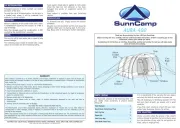
1 September 2025
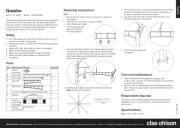
15 Juli 2025
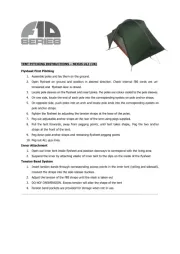
14 Juli 2025
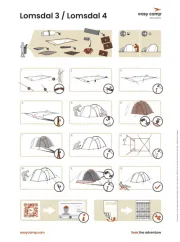
14 Juli 2025
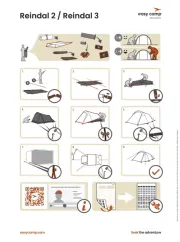
14 Juli 2025
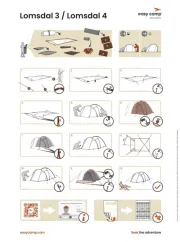
14 Juli 2025

6 Juli 2025
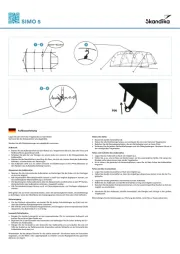
5 Juli 2025
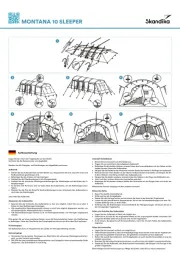
2 Juli 2025
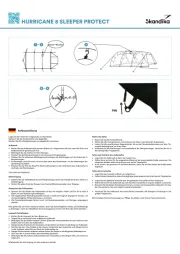
2 Juli 2025